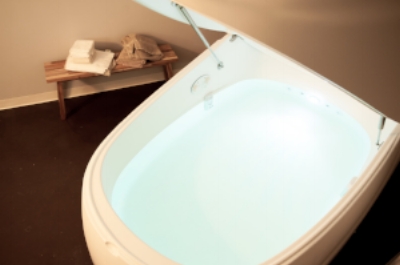Floating favors faulty foot mechanics
/As our physical activity patterns change seasonally, the beginning of spring inspires a myriad of movements dormant during the winter. Akin to spring training in sports, we all have our own ways of warming up our muscles and minds for our favorite outdoor activity. For most, this includes more walking, running, and cycling at various combinations of speeds, grades, and directions. Tennis anyone?
Rarely, does anyone think about evaluating their sense of foot stability and balance prior to beginning a season of (sport-specific) activity. It is precisely this oversight that can lead to issues like plantar fascitis, shin splints, achilles tendonitis and a variety of collateral muscular and skeletal issues.
A lack of proper 1-legged balance implicates the entire rest of the body from a structural standpoint. Especially during walking and running, there is a transfer of movement up the body, from the ankle to the shin, knee, leg, pelvis and spine, including the neck. This gives way to compensations in multiple ways, including stability, mobility and muscular balance far distant from the lower legs and feet - including those with both flat feet and high arches. Yes, your headaches and shoulder pain could be coming from your feet.
Improving your sense of 1- legged balance is the simplest and most effective exercise you can do to improve your gait and overall functional body mechanics. Proper pedal balance is also the keystone to athletic performance. It is the best way to reduce injury and may likely prevent that next ankle sprain.
Test your balance by simply standing on one leg with your eyes straight ahead and lift the other leg so the thigh is parallel to the ground. How long can you stand without faltering and/or falling? (Be near something solid to hold if needed). If you still think you have a good sense of balance, try each leg as above, with eyes closed. It will be very obvious which side needs some help.
The corrective exercise only takes seconds per day and is exactly like the test. Simply stand on one leg while lifting the other and looking straight ahead - not at the floor. It is harder without shoes. You can even do this discreetly at the water cooler or grocery store line by simply shifting most of your weight to one side and barely making floor contact with the other foot. Try variations of this with eyes open and closed (use caution with eyes closed).
If you have or are currently suffering with foot problems or regional body pain caused by faulty foot mechanics, floatation therapy can help. Floating involves a 9'x5' fiberglass pod with a hinged lid, that sits in a private room with a shower. It is filled with 10" of skin temperature water (160 gallons) and saturated with 1000 pounds of medical grade epsom salt. You effortlessly float face up (like a cork), for an hour and emerge feeling different in body and mind. When you are in the anti-gravity state of floating, it is very easy to move your feet, knees, hips and shoulders through ranges of motion that you can't while weight-bearing. Further, you absorb Magnesium through the high concentration of Epsom salt (Magnesium sulfate). This is soothing for the muscles and assists many other body systems. Floating affects regions of the brain that promote rest and repair as well as the areas that process the perception of pain. Floating also helps to restore balance to the muscular and skeletal structures that may have compensated with excess physical stress, due to issues with the feet. You feel good all over after a float.
Floatation therapy is excellent for providing a strong mental balance to combat stress, anxiety and sleep-deprivation. So, as you begin your athletic endeavors this season, take a moment and work on your sense of balance to improve and protect your overall musculoskeletal health. And take comfort in knowing that floating and foot mechanics are friends.
For more on foot mechanics and floating, contact Dr. David Berv at The Float Zone: david@myfloatzone.com
Example of pod in which you effortlessly float to assist Physical and mental well-being


